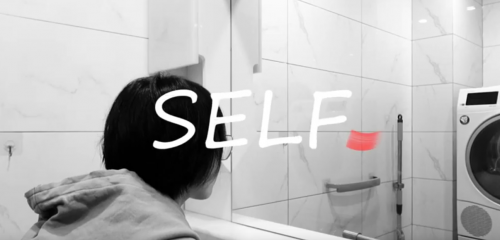Play & Self:
Theme: self
Context:
In my mind, there is a world for me to explore. It's a private universe, unique and mysterious. In it, I can even do time travel and travel through the memories of the time. When did we get used to perceiving sounds and colors, habits we have long taken for granted. I watched a documentary about finding my mind. This documentary gave me great inspiration. It mentions a famous experiment called the “Mirror Self-Perception” Test. In film and television plays, including animation, directors often use mirrors to express the psychological activities of the characters. So I intend to study the relationship between mirror and self.
Method:
I know that before making animation, animators often take a real test video as a reference. So this time I try to make a real video as the early stage of animation reference.
I shot a video in the bathroom with a still lens. Finally, use the editing technique to make different actions between me in the mirror and outside the mirror.
Response: https://youtu.be/lZyy2Lc8o8M
“The mirror game is a synchrony-based paradigm, common to theater, performance arts, and therapy, which includes dyadic synchronized motion, playfulness, and spontaneity.” – Shoshi Keisaria
Mirror test: To make sure that the child sees himself in the mirror for at least a few seconds to have eye contact with himself, then put the red dot on the child's face, and if he is aware of himself then he will know that the red dot is on him. This test proves time and time again that when people are eighteen to twenty-four months old, they begin to have self-awareness. This experiment was first done for animals and only later developed for people. A self-aware creature will recognize itself in a mirror.
This is a very interesting interactive experiment because it confirms that people can perceive themselves through the mirror. Film and television play often use mirrors to express the character's self. When the character has personality division, the image in the mirror is often out of sync with the real world. The character can even talk to himself in the mirror.
Inspired by the mirror experiment, I made a video. In the video, I looked in the mirror at first and didn't see any image, but then I gradually saw the image. Finally, the red dot on my face represents that I recognized “myself”.
'mirror test' video:https://www.youtube.com/watch?v=Okmkn30D0NU
Reference animation video: https://vimeo.com/209003701
https://www.bilibili.com/video/BV1xx411W7uH?spm_id_from=333.337.search-card.all.click
Reference article: Epley, N., & Whitchurch, E. (2008). Mirror, mirror on the wall: Enhancement in self-recognition. Personality and Social Psychology Bulletin, 34(9), 1159-1170. doi:http://dx.doi.org/10.1177/0146167208318601
About This Work
By Yuxin Liu (Robin)
Email Yuxin Liu (Robin)
Published On: 04/04/2022
